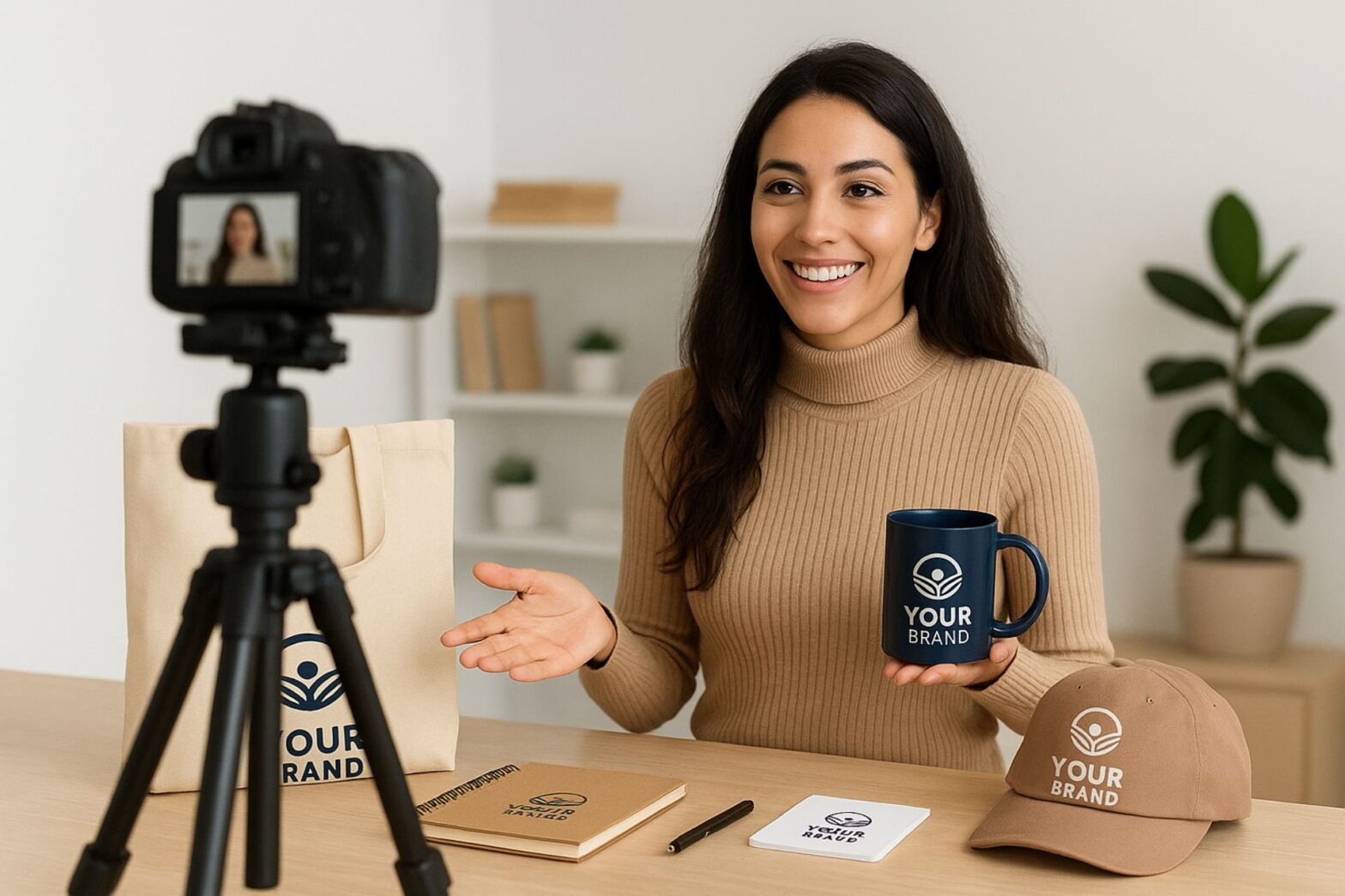Table of Contents
In an era where anyone with a smartphone can be a creator, carving out your space means more than just posting content, it means building a personal brand that stands for something. For content creators, a strong brand is the bridge between your passion, your message and a loyal audience. It’s the guiding thread that shapes what you create, how you present yourself and how you connect with others.
Define Your Niche
To set the tone for your brand, start with your niche. In a crowded digital landscape, being broad rarely wins, being focused does. You’ll want to find a niche market where your voice matters, your passion shines and your audience can relate.
Why this matters:
- A niche helps you clarify your message and content strategy.
- It establishes you as a go-to person for a specific topic, rather than “just another creator.”
- It enables clearer branding, stronger positioning and better connection with your audience.
How to pick your niche:
- List your passions + skills + what you’ve observed people respond to.
- Define your ideal audience: Who are they? What do they seek? What problem do they face?
- Find the overlap: Where your interest meets your skills and your audience’s needs.
- Use keyword research (e.g., via tools like Google Trends or Ahrefs) to validate interest around your niche.
- Commit, but stay open to refinement. Your niche will evolve as you grow.
Tip: Instead of “I make lifestyle content,” you could frame it as “I show how young professionals travel on a budget and build creative side-hustles.” That kind of specificity gives your brand direction and makes you memorable.
Authenticity Matters
A personal brand is nothing without authenticity. Audiences today aren’t just looking for polished content, they’re looking for real people, genuine stories and relatable journeys. When your brand shows who you are, what you believe in and what you stand for, people are more likely to trust and follow you.
What authenticity does for your brand:
- It builds trust and emotional connection.
- It differentiates you from creators who only chase trends.
- It helps attract the “right” audience, ones that genuinely align with your message and brand.
Ways to embed authenticity in your brand:
- Tell your origin story: why you started, what motivates you, where you’re headed.
- Show behind-the-scenes moments: the wins, the struggles, the creative process.
- Be consistent with your values: whether it’s transparency, fun, education, inclusivity, let it show in your content.
- Avoid copying others for the sake of “going viral.” Instead, adapt trends to your voice.
Make Your Brand Recognizable
Your content voice may define what you say; your visual identity defines how you’re seen. A consistent visual style makes your brand instantly recognizable and helps reinforce your message across platforms.
Key elements to consider:
- Logo or signature mark: Even a simple wordmark or icon can anchor your identity.
- Colour palette: Choose one or two main colours + a few accent colours. Use them consistently in thumbnails, banners, social posts.
- Typography: Pick 1-2 fonts that fit your style and use them consistently.
- Imagery/Graphics style: From photo filters, illustration style, to visual templates, keep them aligned.
- Platform coherence: Your YouTube banner, Instagram profile, LinkedIn header, let them all reflect the same visual identity.
Best practices:
- Create a brand style guide (even a simple one) that defines colours, fonts, logo usage.
- Design templates for visuals (e.g., Instagram posts, story frames, video thumbnails).
- Maintain consistency, but allow evolution: As you grow, your style may adapt, but transition intentionally.
- Use design tools like Canva, Adobe Express or Figma to maintain quality and consistency.
When your audience sees your content, they should recognise it before reading it. That recognition strengthens your brand’s presence and trust.

Turn Followers into Fans
Your brand isn’t complete without community. Engagement is the heart of brand-building for creators, it’s how you move beyond one-way broadcasting and into meaningful connection.
Why community matters:
- It increases loyalty and retention of your audience.
- Engaged followers become advocates, sharing your brand further.
- Community feedback helps you refine and evolve your brand in real time.
How to build and engage your community:
- Respond to comments and messages, show that you value your audience.
- Ask questions in your content: What would you like to see next? What challenge are you facing?
- Create interactive content: polls, Q&As, live sessions, behind-the-scenes.
- Offer exclusivity: consider a newsletter, Discord, Patreon or a private group where your core followers can engage deeper.
- Recognise your audience: highlight user-generated content, shout-outs, collabs.
Tip: Engagement doesn’t always mean “every comment must be answered immediately.” It’s about creating a dialogue, showing clarity of purpose and being present. Consistent small actions will build a strong community over time.

Showcase Your Brand Strategically
Social platforms are your brand’s stage. But effective brand building means using each platform with strategy, not just posting aimlessly.
Key platforms & what they’re good at:
- Instagram: Great for visual storytelling, behind-the-scenes, reels, stories.
- YouTube: Perfect for long-form content, deep dives, building authority.
- LinkedIn: Suitable for professional branding, networking and thought leadership.
Branding strategies across platforms:
- Optimize your profile/bio: Clearly state who you are, what you create, why someone should follow you.
- Use consistent handles: Where possible, use the same username and visual identity across platforms.
- Repurpose smartly: A long-form YouTube video can become a clip on Instagram, a blog post summary, an infographic, etc.
- Collaborate: Partner with other creators in your niche. This brings fresh audiences and strengthens your brand’s credibility.
- Track analytics & refine: Monitor what works (and what doesn’t). Engagement, watch-time, follower growth, use this data to evolve your strategy.
Strategy = purpose + platform fit. Even while you experiment, let your brand identity and voice remain consistent.
Continuous Learning and Adaptation
In the digital world, nothing stands still. Platforms change, audiences shift, new formats emerge. To build a strong personal brand, you must evolve, while staying true to your foundation.
Why adaptation is important:
- It keeps your brand relevant.
- It helps you stay ahead of shifts in content consumption, algorithm updates and audience behaviour.
- It gives you space to refine your brand, experiment with new formats and discover new opportunities.
Ways to adopt continuous learning:
- Audit your brand periodically: Are your visuals still aligned? Is your niche still clear? Is your messaging on point?
- Stay curious: Read blogs, listen to creator-economy podcasts, watch market trends.
- Experiment thoughtfully: Try a new format (shorts, podcast, live stream), but check that it aligns with your brand identity and goals.
- Collect feedback: Ask your audience what they like, what they’d like more of. Let data and conversation guide your evolution.
- Upgrade your skills: Whether it’s SEO, video editing, storytelling, branding strategy, continuous growth strengthens your brand.

Your Brand, Your Story
Building a personal brand as a content creator isn’t about chasing every platform or trying to please everyone. It’s about defining what you stand for, expressing it clearly, engaging with your audience and evolving mindfully.
Take these actionable steps right now:
- Define your niche and write a one-sentence brand statement.
- Audit your visuals and make them consistent across platforms.
- Engage with your audience deliberately for 10 minutes every day.
- Pick one new format or platform to experiment with this month.
- Schedule a brand check-in every three to six months to assess and refine.
Your story is unique. Your perspective is relevant. Let your personal brand reflect that. From now on, every piece of content you create, every interaction you have, and every visual element you publish is part of building something bigger than just “posts.” It’s a brand that people remember.

